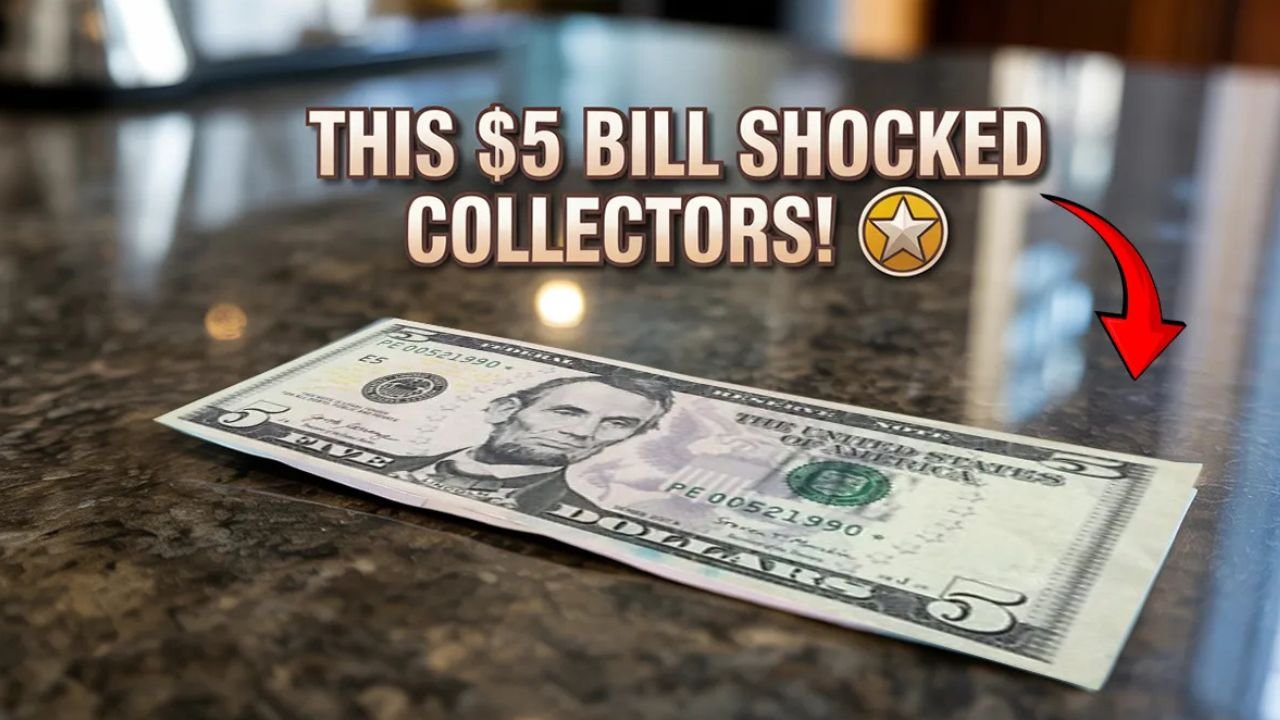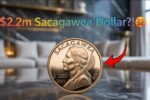This $5 Bill With a Star Note and Radar Serial: In the world of currency collecting, some bills stand out for their unique features and historical significance. Recently, a $5 bill with a handwritten note and a rare “radar” serial number has captured the attention of collectors, fetching an astonishing $659,000 at auction. This extraordinary sale highlights the growing interest in rare and unusual banknotes.
What Makes This $5 Bill So Valuable?
The bill in question is not just an ordinary $5 note—it carries a handwritten message and a special serial number that reads the same backward as forward, known as a “radar” serial. These features, combined with its age and condition, make it a highly sought-after piece among numismatists (currency collectors). The handwritten note adds a personal touch, increasing its historical and sentimental value.
The Significance of Radar Serial Numbers
A radar serial number is a palindrome in the world of currency—it reads identically from left to right and right to left. For example, a serial number like “12344321” is considered a radar. These serial numbers are rare and highly prized by collectors. The $5 bill in question has one such sequence, making it even more exceptional.
The Handwritten Note: A Piece of History
Beyond the serial number, the handwritten message on the bill adds another layer of intrigue. Such notes often provide a glimpse into the past, revealing personal thoughts, historical events, or even political statements. Collectors value these annotations as they turn a simple piece of currency into a historical artifact.
Why Are Collectors Willing to Pay So Much?
The combination of rarity, condition, and unique features drives the value of such bills. With only a handful of radar serial notes in existence—and even fewer with handwritten messages—this $5 bill represents a once-in-a-lifetime find. Auction prices for such items can skyrocket as passionate collectors compete to own a piece of monetary history.
The Future of Rare Currency Collecting
As more people become interested in numismatics, the demand for rare and unique bills continues to rise. Notes with unusual serial numbers, printing errors, or historical markings are especially desirable. This $5 bill’s record-breaking sale may inspire others to search their wallets for hidden treasures.
Frequently Asked Questions (FAQs)
What is a radar serial number?
A radar serial number is a banknote serial number that reads the same backward as forward (e.g., “12344321”). These are rare and highly collectible.
Why do handwritten notes increase a bill’s value?
Handwritten messages add historical and personal significance, turning the bill into a unique artifact rather than just currency.
How can I check if my bill has a rare serial number?
Look for repeating digits, palindromes (radar numbers), or low serial numbers (e.g., 00000001). Online tools and currency experts can help verify rarity.
Are all old bills valuable?
Not necessarily. Age alone doesn’t guarantee value—factors like condition, rarity, and unique features determine worth.
Table: Key Features of the $659,000 $5 Bill
| Feature | Description |
|---|---|
| Denomination | $5 U.S. Bill |
| Serial Number Type | Radar (Palindrome) |
| Special Marking | Handwritten Note |
| Auction Price | $659,000 |
| Reason for Value | Extreme rarity, unique serial number, and historical handwritten message. |



